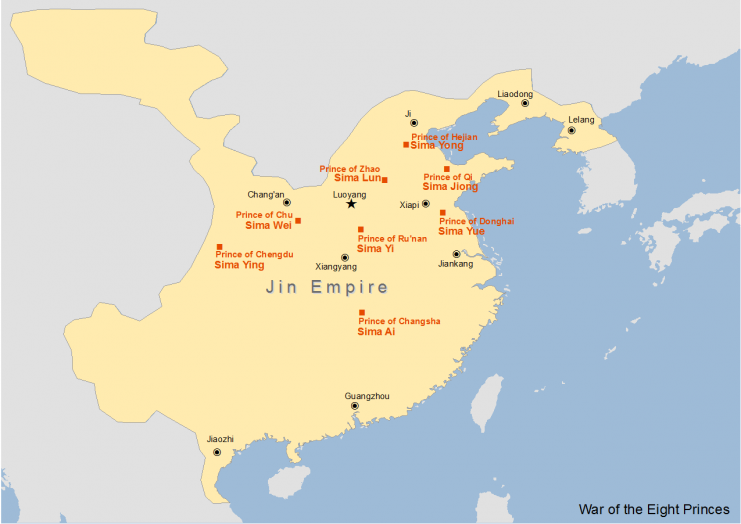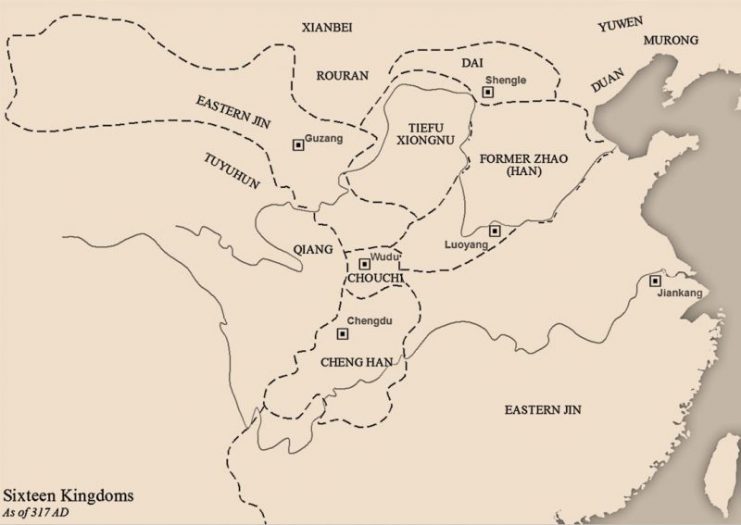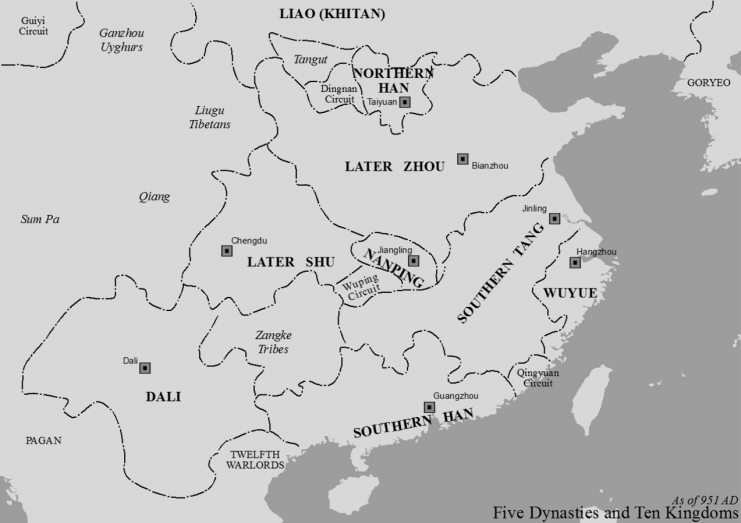Medieval China is a fascinating period to study. Most people think of the large and influential dynasties, and even many scholars don’t know a great deal about the chaotic period between AD 200-500.
But what is called the period of disunion contains numerous stories worth knowing about and shows how anybody, including a former slave, could gain power.
Shi Le began his career as an outlaw during the chaos surrounding the War of the Eight Princes. This was an incredibly devastating conflict that gutted the strength of what had the ability to be one of the large and influential dynasties in the late 3rd and early 4th centuries.
However, infighting among the imperial family, which rivaled the bloodshed and body count on the fictional Game of Thrones television series, led to chaos throughout the realm.

Shi Le was the son of a minor leader of the Jie tribe, which is a branch of the barbarian tribe called the Xiongnu. He was seized by a rapacious governor as a child and he and his fellow tribe mates were sold into slavery.
Later, Shi managed to gain his freedom and stole some horses from an imperial pasture. He joined a group of horse-mounted brigands that took advantage of the chaos from the war to become relatively rich and successful outlaws.
Their success attracted other escaped slaves, outlaws living in the mountains and swamps, and herdsmen who had been dislocated by previous government raids. The group eventually became rather prominent in plundering the eastern provinces and plains surrounding the Yellow River, and Shi emerged as one of their main leaders.
The group was subdued by one of the successor states in the aftermath of the War of the Eight Princes. Shi was forced to submit to the state that historians now call the Former Zhao, but he landed on his feet. His new connections enabled him to rebuild his following with similar cavalry bands that were in the process of being subdued by the new government to become nominal subjects.

Shi Le bided his time for much of the next decade, and expanded his power base in the plains of northeast China. The pivotal break came in AD 319 when the emperor, Liu Yao, and Shi’s nominal ruler, moved his capital at Pingyang to Chanan.
The former capital had a good geographic location in the Fen River Valley, where it could swoop down south and southwest into the old capitals at Changan and Louyang, but also move northeast up the valley through a pivotal mountain pass in the Taihung Mountains and remind people like Shi Le that they were still his subjects.
Moving to Changan gave the emperor more credibility in the eyes of the Chinese subjects he tried to rule, as it was one of the ancient capitals of China. But it allowed Shi Le more space to rebel against the emperor which he promptly did, proclaiming what historians now call the Later Zhao dynasty. The two fought for control over northern China, while the remnants of the royal family that won the War of the Eight Princes ruled southern China.

The wars often hinged on control of the pivotal passes near the city of Louyang. While that capital had been decimated during the War of Eight Princes, it still had a key fortress in the city that was rather strong.
Shi Le’s garrison held the stout, stone walls of the Jiyong fortress for over 100 days. This represents how far he had come from his days as a rebel brigand leading some cavalry. Now he had subordinates holding onto an important fortress while under siege by the emperor’s forces.

The fortress fell in the end, but Shi Le led a relief force of every soldier he could muster: 27,000 cavalry supported by 60,000 foot soldiers. They defeated the emperor and Shi Le took over the empire.
Despite the stereotype typically associated with Chinese emperors, more than once they often came from humble backgrounds. Shi Le is a good example of that, since he started life as a relatively wealthy son, became a slave, freed himself, and then through outlaw activities built a power base that rivaled an empire before founding his own.
Although his empire didn’t last long and he is little known to people outside of academic specialists, Shi Le’s story is an amazing and interesting tale of perseverance.
